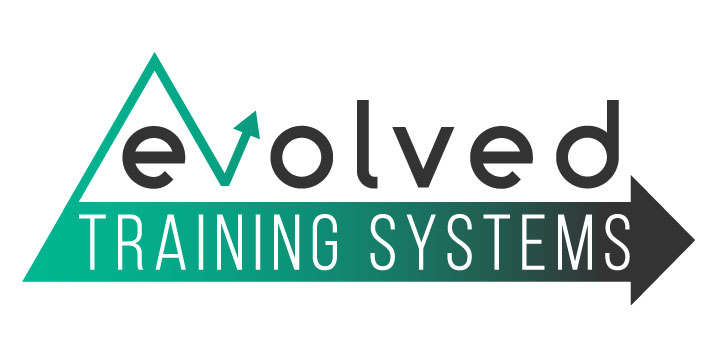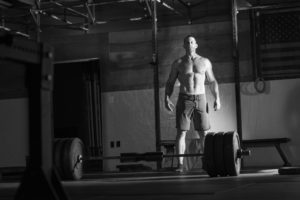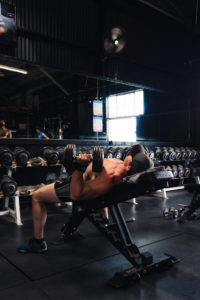Strong – Strong Enough – From Humble Beginnings to Achieving Goals
Part 1
It was January of 1998; I was 15 years old and a Freshman in High School. Basketball was my sport, and I had all the skills to play Varsity, but I was too small. I was late to the puberty train which made it nearly impossible to compete with the older athletes.
But this story begins a few months earlier. In the summer of 1997, I distinctly remember a series of events that occurred in my life which would collectively influence the next 20 years.
The summer after 8th grade was the first time I seriously dedicated myself to a dogmatic pursuit of fitness – but it wasn’t in the form of lifting weights. During this period, my body had done a lot of “filling out”, but I hadn’t yet started to grow taller – so I appeared quite soft. That summer, I committed to swimming 1 mile every day. I calculated how many lengths of the pool would equal 1 mile (64 lengths, or 32 laps), and I embarked on my mission. I also joined the swim team at my country club in Bethesda, MD. Over the course of the 3 months, I only missed one or two days the entire summer. My swim coach was also a weightlifter, though I didn’t realize it at the time. I thought that by swimming, I would look like him. Unfortunately, this didn’t happen – but I did lean up quite a bit.
During this summer, my family and I attended our annual 2-week vacation at our condo in Bethany Beach, DE. Over the years, I had become good friends with a guy named Jon. His family also had a condo in Bethany Beach, a few doors down from ours on the Penthouse level. He was a lot like me, in that his body also grew out before growing up. I was looking forward to showing him my new lean frame and talk about how cool swimming is. When I showed up at the beach in mid August, I was exasperated to find that Jon had also embarked on the fitness journey. While I had picked up swimming, Jon had started lifting weights. He wasn’t just lean, but also defined and strong, and you could see it in his confidence. I remember walking up and down the beach looking for girls to talk to (like we did the last few summers), and the difference in the way the ladies responded to him was palpable. Jon took me to the gym and I went through a workout with him. It felt awkward, and I was very much out of my element. The movements that now came naturally to him were uncoordinated and laborious for me. Though I was inspired, I didn’t have the means or the knowledge to commence this portion of my fitness journey, yet.
A few weeks later, school resumed. I joined the track team to enhance my conditioning for basketball, as well as playing in a fall basketball league, which was prep for the winter season. With the dual-sport commitment, I let the weightlifting thing fade from my mind for the time being. As it happened, in the winter of 1998, I failed to make the Varsity squad for basketball. The coaches told me that I was only lacking size and strength. I had been competing with, and beating, the current Varsity athletes for months, and I talked a big game about this pending season – I was demoralized. For as long as I could remember, my entire focus in life was being a 4-year varsity athlete with dreams of playing college basketball. I felt it almost unfair to be relegated to JV; cheated by genetics.
I starred on JV that year – averaging over 20 points per game, and shooting the ball way more than my teammates would have liked. With basketball on auto-pilot, my mind was elsewhere. Everything came back full circle to watching Jon walk down the beach, and the conversation I had with my swim coach at the end of the summer where he explained that weightlifting was the catalyst that really manifested change in his body, despite years of being a competitive swimmer. I became ravenous for material, for knowledge, and for a game plan to implement all this new information. Nothing would keep me from playing Varsity next year, even if puberty would continue to defy me for another season.
Like most knowledge-hungry teenagers, the first place I looked was in the muscle-mags. I am not quite sure exactly how or why, but something inside told me that these routines were not the approach I was looking for. Maybe it was the gigantic look of these guys – maybe it was my perception that this body type wouldn’t thrive on a basketball court, or maybe I was just wise beyond my years – But I knew for sure that I didn’t want to workout for 2 hours a day, crushing my chest and Biceps with 20-30 sets each. I knew there had to be a better way.
The internet was just starting to thrive during this time. Maybe it was just dumb luck, but the first thing I stumbled upon was a series of websites dedicated to “old school” training methods. These guys were training with the knowledge and methods of guys from the 1950’s and 1960’s. They spoke about this being the “pre-steroid era” and how all the information currently being pumped at the consumer is geared toward people using drug assistance. This resonated with me. I joined message boards on a number of sites, read all the content linked through these sites, and spent countless hours digesting boundless information. I ordered every book that was recommended (Keys to Progress by John McCallum, Beyond Brawn by Stuart McRobert, Building the Classic Physique by Steve Reeves), and this initiated a process that would have a lifetime of influence on the way I viewed the methodology of training.
Despite each book advising a slightly different approach to achieving goals, the pervasive message in each can be defined in these principles:
1. Choose a limited number of movements that are important (primarily compound movements that move a lot of weight – i.e. Squats, Deadlifts, Pressing, Pulling) and avoid movements that drain energy needlessly (bicep curls, leg extensions)
2. Train 3 sessions per week on alternating days, working the full body in each session (total sets per workout range from 10 to 30, depending on rep scheme, loading parameters and recovery ability)
3. Attempt to add a little bit of weight to the bar each session (most formats advised micro-loading – increases of 1% each session, or a double progression method with a rep range, such as 8-12)
4. Account for and decrease volume and frequency of training as a result of lifestyle factors and any additional stressors that negatively impact recovery (sleeping patterns, type of employment, nutrition quality, age, parenthood, outside activities and sports etc…)
Each author had a slightly different take on precise implementation of these principles, but the general message was clear – Perform the MINIMUM amount of work necessary to instigate progress. This was a novel idea in comparison to the routines promoted in the muscle mags. The biggest lesson I learned through the first year of absorbing knowledge and training myself, is that the big movements (referenced in principle #1 above) absolutely must be the focus of training until you are “strong enough” to warrant adding in additional movements. The term “strong enough” is clearly extremely subjective and it also depends on why you are training with weights. Strong enough for a 45 year-old father is definitely not the same as strong enough for a 22 year old NFL Running Back. Strong enough is relative to the end game.
The big movements are called “compound” because they involve multiple muscle groups. The athlete can get more bang for their buck with these exercises. A deadlift involves the entirety of the posterior chain. An upper body press involves the chest, anterior delts and triceps all simultaneously, just as a pull-up or a row utilizes the back, posterior delts and biceps. If you could do Pull-ups with 100# added, do you think you would still have small biceps? If you could Overhead Press your bodyweight, do you think you would lack tricep development? If you could squat double bodyweight, would you worry that your quads or glutes weren’t getting enough direct stimulation to grow? The experts I was learning from understood that people all have different goals. They understood that if your goals are purely aesthetic in nature, that some isolation movements can, and should, be included – but they were steadfast in the belief that there was no need for these movements until the base of strength and size was already in place. I learned that the body works and functions as a cohesive unit. You won’t be able to add muscle to your biceps if your body doesn’t have the size to support that muscle. By the same token, if you trained only upper body, and excluded all lower body work, eventually you wouldn’t be able to add any more muscle to the upper body, because the legs wouldn’t be strong enough to support the increased weight of the torso. The simple truth is that the body grows as a functional unit, not as pieces, and training the body as a whole will stimulate much more testosterone and growth hormone production.
I could really relate to these sentiments. I valued hard work, and I possessed the dedication to implement these principles. I was driven to become stronger and to add quality bodyweight to my frame. My goal was larger than to look good at the beach – I needed to be able to compete with the older guys on the basketball court, and that was the only thing I cared about. Weightlifting was just a means to an end at that time. I devised my first ever structured training plan and went to work:
Monday:
A. Breathing Back Squats – 1 x 20
Superset with Breathing Pullovers x 25-30 reps (light)
B. Dips – 4 x max reps
***Once I could do 5×8, add weight
C. Bent-over Barbell Rows – 4 x 8
D. Weighted Sit-ups – 2 x 15-20
Thursday:
A. Deadlifts – 4 x 8
B. DB Incline Bench press – 4 x 8
C. Pull-ups – 4 x max reps
***Once I could do 4×8, add weight
D. Lying Leg Raises – 2 x 20-30 (with ankle weights)
This routine is the pinnacle of simplicity. It requires extremely hard work on a select few movements that stimulate development in the entire body. It would be easy to look at this routine and say that it the volume is too low, or ask why I only trained twice each week. I have three reasons for this.
1. I was playing basketball or being active outside for hours each day, and in an attempt to adhere to principle #4 above, I wanted to err on the side of caution.
2. Someone once asked a rhetorical question of me, and it inspired some thought. I was asked “why would you do more if you could get results doing less?” I took this to heart, and I decided to start with the minimum. If that didn’t work, I could always add more – but if I were to start with more, what would be the remedy if it didn’t work?
3. The intensity and effort applied to each training day was such that it would be difficult to implement this level of intensity in a repeatable manner if the volume were higher (specifically the 20-rep squats).
The 20-rep breathing squats were a latent form of training lore until they made a bit of a comeback with CrossFitters in 2012 or 2013. This set of 20 reps is meant to be the hardest thing you’ll ever do physically in life. The idea is that you can rest as long as you want at the top of each rep, but you absolutely cannot rack the barbell until all 20 reps are complete. This one set is so hard and debilitating that many top strength athletes have ended up lying in a pile of puke at the end, and then foregoing the remainder of the training session. You must add 5 lbs to the bar each time you successfully complete the 20-reps. This exercise has been the cause of extreme anxiety leading up to training sessions – but this was the type of perseverance I had. I ate everything in sight – even waking up to an alarm at 2am for many months in an effort to eat 1000 additional calories. At the end of my first 3-month cycle, I had added 50 lbs to my 20-rep squat and 25 lbs of bodyweight. As a side effect, I also increased my vertical jump by almost 9 inches.
These results were extraordinarily motivating – but they were just the tip of the iceberg. I had caught the weightlifting bug, and I was thirsty for more knowledge. I needed to know what to do next. I was on a mission to get strong, yet I still wasn’t even “strong enough” in my mind. I was only 16 years old, a sophomore in High School – How much could I achieve? This entire year was setting the stage for a life of dedication to a craft and a science that I was only starting to understand. What would be the next step in the journey to get strong? What exactly is strong? What is strong enough? I was embarking on an unknown adventure into a world I barely understood, and I was loving every second of it. Stay tuned for part 2 as I discuss the lessons learned through the remainder of High School and into College.




